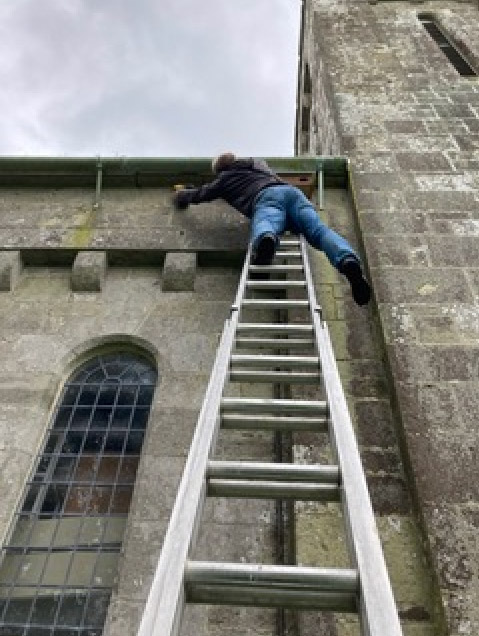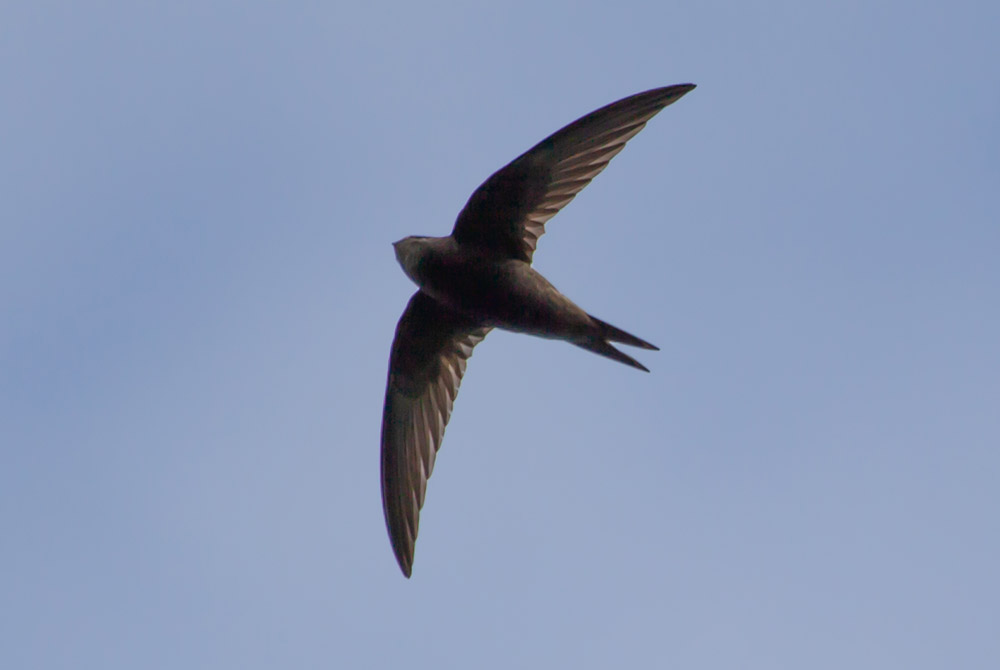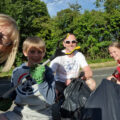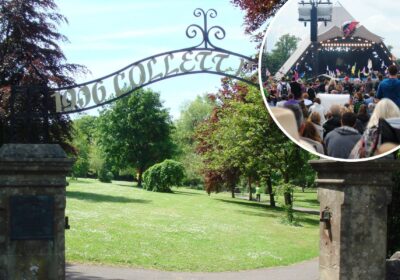Discover how one local wildlife group is providing homes for this enchanting summer migrant.
From their spectacular aerobatics to their distinctive screaming call, swifts are as much a part of the English summer as Wimbledon and strawberries and cream.
Sadly, they are also on the Red List of endangered species but a group of people in the Shaftesbury area are doing everything they can to ensure these Top Guns of the avian world thrive once more.
Shaftesbury Swifts was formed in 2019, after the town council’s Wild About Shaftesbury competition invited people to put forward ecology-based ideas for new community groups for the SP7 area.
Group member, Catherine Simmonds, joined after returning to live in Enmore Green, which is home to a long-standing swift colony.
“I’d grown up with this colony and it was only when I moved away I realised they are not everywhere,” she says.
Catherine also came to realise that swifts are only with us for an average 100 days between May and July, and that they are generally urban birds, having adapted to living in the built environment from their natural habitat of caves and old trees.
“There are big colonies in Bristol, London and Salisbury and I discovered there are also colonies in Maiden Newton and Tisbury. I wanted to know more about them, to understand their lifestyle more,” she says.
She also realised how little we really know about these birds, who can literally be living alongside us, in the roofspace of our home or workplace.
“Unlike other birds they can’t walk – they have no rear-facing toe, which means they can only cling and therefore spend their life on the wing,” says Catherine. “They don’t physically make nests and they eat what they find in the air; insects and spiders caught up in thermals.”
These insects are formed into pellets and an individual one can contain as much as 20,000 insects, although the birds are thought to consume around 100,000 insects a day.
“Although they don’t sit in trees, they really benefit from them because of the insects they attract,” says Catherine. “A really big sycamore can pump out insects all day and you’ll often see them skimming over the top of trees in areas such as Shaftesbury.”

How to create a swift sanctuary
Their favoured nesting places are under the roofs of houses or other buildings, such as churches, and they like to live in colonies, she explains. Sadly, because we are more meticulous about house repairs these days, we may be blocking up the holes they use, reducing their chances of finding a good home.
However, thanks to Shaftesbury Swifts, their opportunities for a Dorset des-res are rising and NBVM readers can help!
The group can give information about having ‘Swift bricks’ installed in your home; swapping out an existing brick for one with a swift-sized hole and a black box behind it, so that any detritus and insects stay out of the main part of your roofspace.
Swift groups have also been successful in pressing for swift bricks to be installed in new-builds in the Salisbury area, with developers keen to help out. Swift boxes can be a success – Catherine describes one made by a homeowner in Enmore Green whose ‘swift hotel’ apex box (fitted at the top of his roof) saw new residents within a few weeks.
“The trick is attracting the secondary arrivals – juveniles who have flown here from Africa in late May – to your accommodation,” says Catherine. “This second arrival are checking out opportunities for homes and if they spot yours, they may come back next year.”
With the help of Roger Maynard from Hampshire Swifts, Shaftesbury Swifts installed 18 new boxes in the town over this year’s May Bank Holiday and Pewsey-based raw dog food company, Honeys, paid for two double boxes at St John’s Church in Charlton.
Collaborating with store owners Richard and Kelsie Whittemore, using funds raised from Rachel Sargent’s swift card designs, the group installed five double-peak swift boxes and three house martin cups on the new Morrisons/Elite Garages store in Shaftesbury’s Bell Street.
Meanwhile, St Leonard’s Church at Semley has already installed boxes inside their tower and Donhead St Mary boasts an excellent colony under the church eaves.
“There’s been big success across the country attracting swifts to boxes installed behind louvres in church towers and this year we are hoping to team up with more SP7 area churches on this,” says Catherine.
The group also runs a Facebook Page, Shaftesbury Swifts, where people can post images, advice and sightings. They count swifts, walking to their evening haunts where numbers tend to congregate.
“If you’re lucky, towards the end of the season, you’ll find them in a group where you can take a photograph then count them,” says Catherine. “Last year I think we got to 53.”
They also help out on Swift Awareness week, which takes place around 2-10 July, with events including a Swift Walk on Sunday 4 July at 8pm, from Abbey Gates. Walkers can stroll round Shaftesbury and see the town’s more unusual swift hideouts.
On Sunday 10 July at 8.30pm, writer and swift group member Christopher Nicholson will be presenting a talk in Donhead St Mary churchyard. At dusk, participants will be able to watch the swift colony coming in to nest overhead.
Fleeting visitors
Not long after this, says Catherine, the swift season will end for 2022.
“They’ll go back to Africa, where they’ll fly across the Sahara, to the south, or to the rainforests of the Congo, anywhere they can find the insects they need,” she says.
Her love of these mysterious birds shines out but, she says, they give back to us all.
“You can sometimes feel as if things are going out of control, environmentally, but if you can target one thing to help, even if we can’t control the bigger picture, we can do great work here.”
Events are free but donations are welcome. Email shaftesburyswifts@gmail.com for more details.
by Faith Eckersall











Leave a Reply